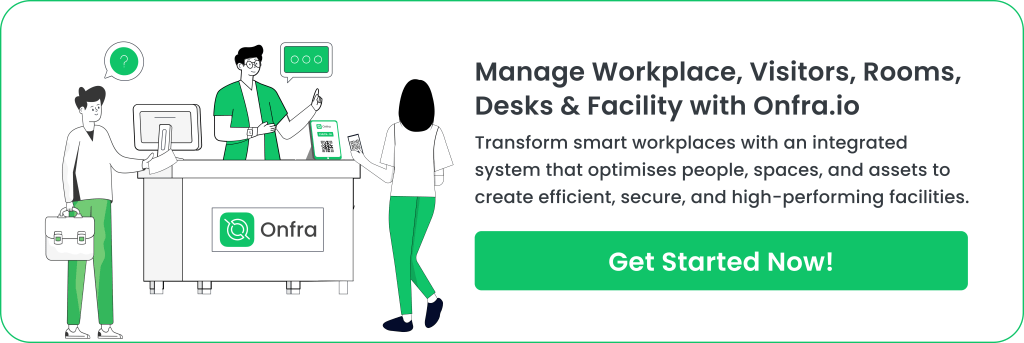Coworking spaces have moved from the margins to the mainstream. What began as a creative solution for freelancers and startups in the early 2000s has grown into a global workplace model embraced by remote workers, entrepreneurs, and even Fortune 500 companies. Back in 2010, coworking was about grabbing a desk, decent Wi-Fi, and maybe a good cup of coffee. By 2025, it had become a hub for flexibility, community, and an antidote to the isolation of working from home.

So what caused this evolution? Two major shifts: the remote work revolution after 2020 and the rise of the gig economy. People weren’t just looking for flexible workspaces—they were actively redefining what work looked like. Add to that the post-pandemic need for human connection, and coworking became more than a convenience—it became a necessity.
By 2030, coworking spaces are no longer just about physical infrastructure. They’ve become smart, dynamic ecosystems that blend technology, wellness, collaboration, and personalization. Today’s coworking environments use AI-powered scheduling, modular work zones, and on-site wellness offerings to support how people actually want to work.
Coworking now plays a central role in workplace strategy. Companies use it to attract talent, reduce overhead, and support hybrid teams. Individuals use it to network, focus, and find belonging. It’s not just where people work—it’s where work evolves.
The Core Philosophy in 2030
At the heart of tomorrow’s coworking spaces lies one thing: community. It’s no longer just about shared real estate. It’s about creating an environment where collaboration is seamless, spontaneous, and encouraged.
Spaces operate like a service now—think Workspace as a Service (WaaS). You don’t “rent” desks anymore. You subscribe to environments—quiet zones for focus, energetic lounges for ideation, wellness corners for recharging.
And the vibe? Less office, more innovation lab. Spaces are designed to spark creativity, whether you’re building a startup, writing a screenplay, or coding a platform.
Tech-Infused Workspaces
Let’s talk about tech—because coworking in 2030 runs on it. Desk booking is powered by AI that learns your schedule and preferences. Augmented reality (AR) guides you through new spaces like Google Maps for your office.
Security and personalization go hand in hand. You check in with a glance—biometric facial recognition. Your preferred lighting, temperature, and even coffee order get triggered the moment you arrive.
This is where platforms like Onfra shine. Onfra’s AI-driven booking and visitor management makes the whole experience frictionless. No waiting lines at reception. No back-and-forth emails. Just smooth, intuitive interaction.
Accessibility and Inclusivity at the Forefront
One of the biggest changes in 2030? Accessibility is now a default, not a design afterthought. Coworking spaces follow universal design principles, making them usable for all—regardless of physical or cognitive ability.
Self-serve kiosks have become the face of reception. Onfra Pad is a perfect example—it transforms into a fully accessible kiosk that speaks, displays, and even signs (yes, with visual sign language) to guide visitors. Whether someone is using a wheelchair or navigating with visual impairments, the experience is equitable.
Coworking Spaces Powered by Sustainability and Smart Infrastructure
In 2030, sustainability is no longer a competitive differentiator for coworking spaces—it’s simply expected. Green-certified buildings are the norm, not the exception. These spaces are self-sufficient, often generating their own power through solar panels or microgrids, harvesting rainwater, and operating closed-loop recycling systems. What makes them truly intelligent, though, is their use of smart infrastructure.
Every aspect of the space is optimized through data. Lighting adjusts automatically based on natural light levels. HVAC systems run on demand, not timers. Even desks and monitors are energy-aware—powering down when not in use. Materials are thoughtfully chosen: modular, recyclable, and locally sourced. Coworking spaces are no longer just sustainable—they’re regenerative, setting a new standard for commercial real estate.
Hyperlocal Reach, Global Access: The New Coworking Network
Coworking in 2030 is no longer restricted to downtown towers or startup hubs. It’s everywhere—from metro neighborhoods to small towns and scenic retreats. Micro coworking hubs have emerged in apartment buildings, shopping complexes, and rural districts, giving people access to professional environments without the commute.
What connects them all is a shared digital backbone. Whether you’re working from a beachfront coworking spot in Goa or a hillside hub in Himachal, your “passport membership” travels with you. One unified platform handles access, booking, preferences, and even your preferred desk setup. These networks combine the comfort of local convenience with the power of a global community—making coworking truly location-agnostic.
Coworking Spaces Tailored for Specialized Niches
The era of one-size-fits-all coworking is over. By 2030, coworking spaces are built around what people do—not just where they sit. Specialized niches have taken root, creating environments tailored to specific professions. Creators work in studios with green screens, soundproofed editing bays, and streaming setups. Tech professionals get ergonomic workstations with multi-monitor mounts, testing rigs, and private dev zones.
Scientists and researchers collaborate in coworking labs equipped with safe benches, instrument storage, and remote access to equipment logs. Podcasters have sound-isolated booths, and VR developers work from motion-capture-friendly rooms. The focus is no longer just on aesthetic design—it’s on functional utility, enabling people to do deep, focused, and creative work.
Data Security and Privacy in Shared Environments
Security has caught up with the flexibility. With zero-trust policies and encrypted local networks, you don’t have to worry about your codebase being compromised while working in a shared space.
There are also physical layers of privacy—soundproof booths, private server ports, and biometric locks for confidential meetings.
Coworking Spaces and the Redefinition of Social & Professional Interaction
In 2030, coworking spaces have completely reimagined what it means to network and collaborate. Gone are the awkward icebreakers and forced small talk. Instead, AI-driven community managers intelligently suggest connections based on shared interests, complementary skills, or overlapping projects—turning chance encounters into meaningful professional relationships.
Inside these spaces, social interaction is organically woven into the environment. Networking lounges display real-time community dashboards: who’s launching a product, who’s hiring, who’s organizing a skill-share. These displays spark conversations without pressure, creating a sense of intentional serendipity. Regular panel discussions, casual meetups, and collaborative events are part of the weekly rhythm, ensuring members don’t just co-work—they co-create and co-grow.
Coworking Spaces Prioritizing Health, Wellness, and Work-Life Balance
The future of coworking is not just about better work—it’s about better living. Coworking spaces in 2030 are designed with wellness at their core. Nap pods, meditation rooms, ergonomic lounges, and biofeedback stations are standard features. Lighting systems shift throughout the day to support your circadian rhythm, helping improve focus in the morning and relaxation by late afternoon.
Even the furniture interacts with you—desks prompt you to stretch, hydration stations monitor your water intake, and lounge areas support rest and creativity. Designers have integrated these wellness features into the core of the workspace, not as perks but as essentials. In 2030, we don’t measure productivity by hours worked—we define it by focus, creativity, and balance. Coworking spaces deliver that by design.
The Invisible Power of IoT in Coworking Spaces
At the heart of every modern coworking space lies a silent, responsive infrastructure powered by the Internet of Things (IoT). These systems don’t just support day-to-day operations—they enhance them. Real-time data allows members to instantly see which phone booths or meeting rooms are available. Smart coffee machines remember your go-to brew. Climate control systems adapt based on room usage and personal preferences.
Predictive maintenance ensures that equipment, from printers to projectors, stays functional and up-to-date. Even utilities like water dispensers and air purifiers report their own performance stats to backend systems. The result is a frictionless experience—everything just works, because everything is connected. In 2030, coworking spaces don’t feel like shared offices—they feel like intelligent environments designed around you.
Coworking Spaces as a Business Strategy
Coworking spaces are no longer just an alternative to traditional offices—they’ve become a strategic business tool. For companies looking to scale quickly, especially across global markets, coworking offers flexibility that fixed offices simply can’t match. Instead of investing in expensive leases and infrastructure, enterprises now rely on coworking networks to onboard remote and international teams seamlessly.
With flexible memberships, hot desks, and on-demand meeting rooms, companies can give employees a professional, fully-equipped workspace from day one—without administrative delays. This “plug-and-play” model helps optimize budgets, support hybrid work, and improve employee satisfaction. Teams get the freedom to work from anywhere, while organizations maintain operational agility. For high-growth businesses, coworking spaces are now integral to expansion, talent acquisition, and cost control.
Coworking Spaces as Hubs for Learning and Upskilling
The coworking space of 2030 isn’t just where work happens—it’s also where growth and learning take place. These modern environments are doubling as learning centers, integrating professional development directly into the workday. Inside many coworking locations, you’ll find dedicated rooms for workshops, ongoing training sessions, mentorship meetups, and peer-to-peer learning lounges.
Startups use coworking spaces to host pitch practice sessions. Freelancers organize skill-share events. Even established companies run team development programs in-house. This shift blurs the lines between working and learning—making personal and professional growth a natural part of the coworking experience.
The result? A thriving ecosystem where members don’t just complete tasks—they evolve. Whether it’s learning to code, mastering a new tool, or networking with experts from other industries, coworking spaces now function as micro campuses for lifelong learning.
How Onfra Will Be a Key Enabler in 2030 Workspaces
Let’s be honest—coworking in 2030 would be chaos without smart platforms like Onfra. It’s the brain behind the space.
Want to book a desk? Onfra’s AI knows your habits and books it for you before you even ask. Visitor coming over? They’ll check in with Onfra Pad—no receptionist needed. And yes, it’s fully accessible for all users, including those with disabilities.
It’s secure, scalable, and fully integrated into every layer of your coworking journey.
Conclusion:
Coworking spaces in 2030 aren’t just an evolution of the office—they represent a fundamental redefinition of work itself. These spaces reflect a shift in mindset: work is no longer tied to a desk or a daily commute—it’s a flexible, dynamic experience shaped by individual needs, team culture, and global connectivity.
Today’s coworking environments are designed for how people actually work: fluid schedules, hybrid teams, bursts of collaboration, and deep solo focus. They support not just productivity, but also creativity, well-being, and lifelong learning. In this revolution, physical space and digital infrastructure work in harmony to deliver frictionless, outcome-driven work experiences.
At the heart of this transformation are platforms like Onfra, quietly enabling the seamless operation behind the scenes. From visitor check-ins to accessibility tools, space utilization analytics, and real-time adjustments, Onfra helps coworking spaces stay responsive, inclusive, and human-centered. It’s not just about managing the space—it’s about helping people thrive within it.
Coworking in 2030 is smarter, healthier, and more intentional—and it’s just getting started.

FAQs
1. What will coworking spaces look like in 2030?
They’ll be tech-driven, modular, community-focused environments designed for hybrid work and wellness. Think smart desks, AR navigation, and specialized niches.
2. How will accessibility improve in future coworking spaces?
Accessibility will be foundational, not optional. With self-serve kiosks like Onfra Pad, biometric check-ins, and universal design, everyone gets equal access.
3. Will companies still use traditional offices in 2030?
Some will, but many will shift to hybrid models. Coworking spaces offer flexible, scalable solutions that large organizations can’t ignore.
4. How does Onfra fit into the future of coworking?
Onfra simplifies desk booking and visitor management with AI, accessibility-first interfaces, and integrations that support fast, secure operations.
5. Are coworking spaces safe for sensitive work and data?
Yes. Advanced cybersecurity, zero-trust networks, and privacy-first infrastructure are becoming standard in 2030 coworking models.

A subject matter expert in facilities, workplace, culture, tech, and SaaS, I create impactful content strategies that enhance startup retention and foster strong connections. With a blend of technical expertise and creativity, I drive engagement and loyalty. Always eager for challenges and make a lasting impact.
